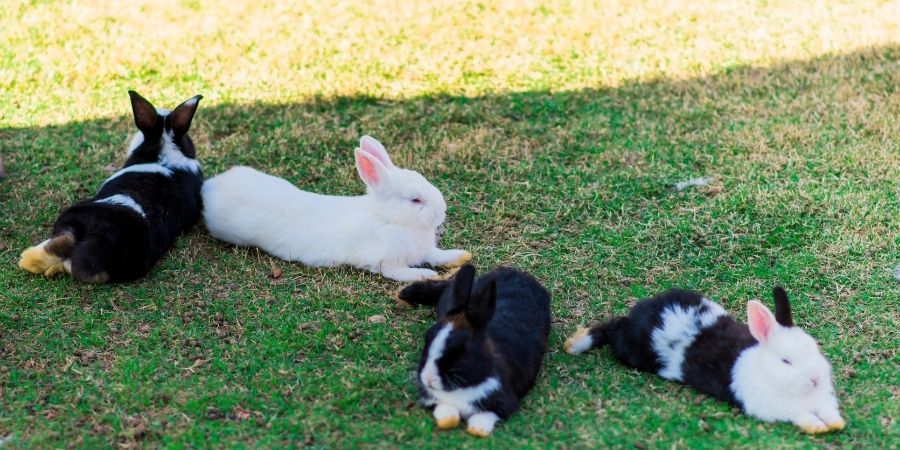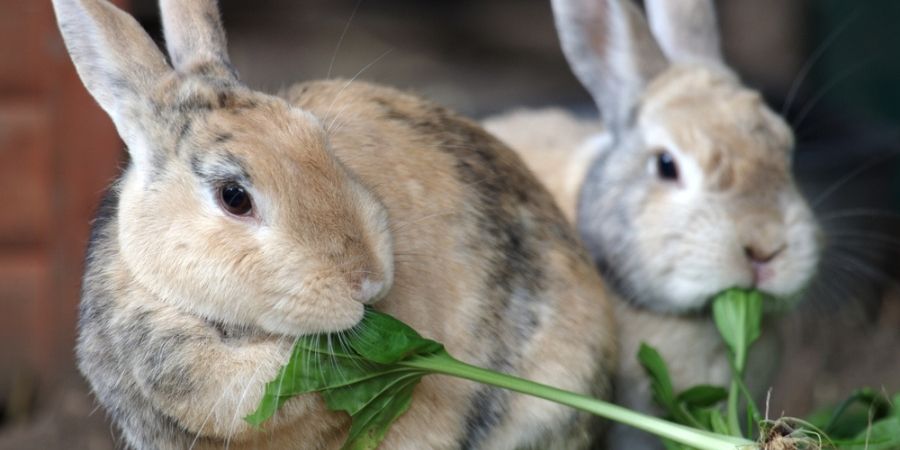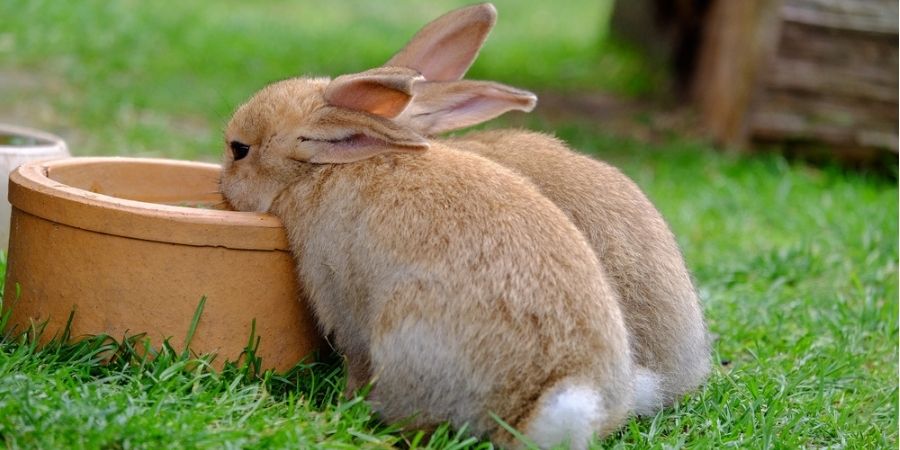During the warmer months, wild rabbits spend the hottest part of the day underground in their nice, cool burrows, coming out to feed in the mornings and evenings when the day is cooler.
Pet rabbits don’t necessarily have the option to burrow, so they often need a helping hand when sun comes out to prevent them from getting too hot. In extreme cases, too much hot weather could lead to your rabbit developing heatstroke, which is likely to make them very poorly. It’s important to get to know the signs of heatstroke and contact your vet immediately if you’re worried. Signs include:
- Drooling
- Taking short, quick breaths
- Acting very sleepy or lethargic
- Unconsciousness
- Having fits
Any bunny can be at risk of heatstroke, but long-haired breeds, rabbits that are overweight, and very young or old bunnies are most at risk.
Let's beat the heat!
When it comes to heatstroke, prevention is always better than cure – here's our tips!
1. Find the shade
If your bunnies live outside, it’s really important that you keep their enclosure out of direct sunlight. Wooden hutches, sheds and runs can get very hot in the sun, so remember to move them to a well-shaded area of the garden.
If your garden doesn’t provide much shade, you can make your own by draping a tarpaulin or towel over part of your rabbits’ run – just make sure there’s a nice through draught of cool air so it doesn’t get too hot inside. Trees, parasols, sun umbrellas and DIY sun shelters also make the perfect shaded spots. Remember to keep an eye on the direction of the sun, as you may need to move things around throughout the day so the shade doesn’t disappear!
If your bunnies like to free-roam in the garden, you can also provide lots of shrubs and bushes for them to hide under – not only will it provide them with plenty of shade, it’ll also keep their little minds active with lots of enrichment! Remember to make sure that none of the plants are toxic for your rabbits, that your garden is nice and secure to keep them safe, and they can’t accidently get shut into any greenhouses or sheds where it can become extremely warm!

2. House bunnies
Not all rabbits are outdoor explorers, so it’s important to remember that it can get just as hot inside for indoor bunnies. If your rabbits live in a conservatory or summerhouse, they will need to be moved into a cooler room during the summer months as it will get dangerously hot!
Creating a cool room is a great way to help keep indoor rabbits comfortable in the heat. Give your rabbits the coolest snoozing spot in the house by simply closing the curtains/blinds on the sunny side of the house, and creating a refreshing breeze by opening windows and using a fan.
Remember to never point the fan directly at your rabbit and make sure they have plenty of room to move away from the breeze if they wish. It’s also important to ensure that they can’t get out of any windows, and that the wires of any fans are kept away from nibbling teeth!
3. Cool hiding places
Regardless of whether your rabbits are in a shaded enclosure, free-roaming your garden, or chilled out indoors, they’ll still need plenty of cool places to lie when the weather is hot!
Tunnels and cardboard boxes provide great shade from the sunshine, and can provide your bunnies with lots of entertainment! Cooling mats also provide the perfect refreshing snoozing spot, but if your rabbits are mischievous little nibblers, you may find that cold tiles from your local DIY store will work well, as they’re heavier and can’t be thrown around. It’s just important to make sure that they can’t fall on your rabbit or trap their little toes!
Don’t forget that rabbits often thrive from jumping onto bunny-safe platforms, exploring and reaching, so providing them with various hiding spots, cooling mats and cold tiles around their home at different levels will bring endless fun!
4. Cold as ice
A really simple way to help keep your lovely rabbits nice and cool, is to fill a bottle with water and freeze it overnight. Wrap it in a towel or sock – whatever you have to hand! – and place it next to their home. It’ll give them something nice and cold to lie against when taking their summer nap. The bottle will be very cold, so it’s important to make sure that it’s safely wrapped or placed against the outside of their home, so your rabbit can’t burn their skin!

You can also get creative and pamper your bunnies with some DIY ice treats, or put their tasty leafy greens in the fridge or freezer for an extra cool snack!
5. Provide plenty of water
When we’re a little warm, we drink lots of water to keep ourselves hydrated – rabbits are the same! It’s vital to provide your bunnies with constant access to clean, fresh water, but as they’re likely to drink more when it’s hot, it’s especially important to increase the amount of water bottles and bowls they have in the summer. Keep an eye on their water throughout the day and refresh it regularly so it stays cool.
Another great way to help keep your furry friends hydrated, is to provide them with some tasty fruits and veggies as a treat – you can even sneak in extra water by drenching the veggies before they tuck in. Just make sure you’re providing them with an appropriate amount (not too many!), and introduce them slowly to avoid problems such as gut stasis!

6. Don't forget to groom
With their thick fur coats, it’s no wonder that rabbits can get uncomfortable in the summer sun – especially long-haired breeds! During the summer, rabbits ‘moult’, meaning they shed and groom out their thick winter fur, replacing it with a thinner summer coat.
Giving them a daily brush will help them to remove the excess fur and keep them cool. Just remember to find a safe and secure place for grooming – the floor often works best. It’s also important to make sure that the grooming session is as low stress as possible for your bunnies, with short brushing sessions and tasty treats!
Finally, don’t forget to check your rabbits’ bottoms daily to make sure they’re always clean and dry, as dirty bottoms can lead to fly strike!
Read our advice on creating the perfect home for your rabbits.
